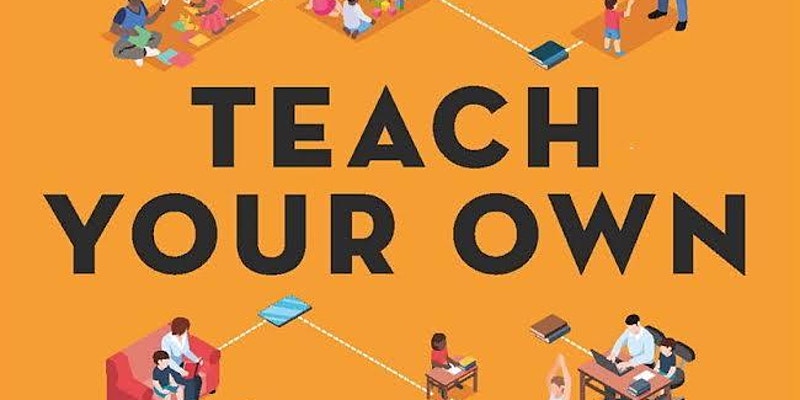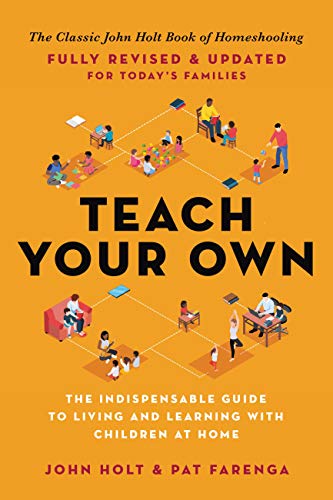Learning: Lost and Found, by Patrick Farenga

Learning that’s lost in school can be found in many ways, if it needs to be found at all.
As a homeschooler and author, I field many questions about the lost educational and social opportunities children face by being out of school, but the COVID-19 pandemic has made the issue of lost learning a deep concern for many. Headlines such as “Research Shows Students Falling Months Behind During Virus Disruptions”1 exacerbate our fears about children falling behind in school and therefore in life.
Don’t let the hype upset you; your children will continue to learn and grow whether or not they are in school. Homeschoolers matriculate in and out of school, get into college, and find work they want to do without running through school’s curricular gauntlet. Missing months or years of standard school learning does not take an equivalent amount of time to regain. Further, test scores don’t truly reflect what people have learned. John Holt, writing in the early 1960s, noted that the only difference between a good student and a bad student is the good student waits until after the test to forget the answers. This is truer now than ever, but school continues to make test scores the gold standard for determining who passes and fails. In 2015 a two-year study on testing in urban schools revealed the average student “takes 112 mandatory standardized tests between pre-kindergarten and the end of twelfth grade,”2 adding more bureaucracy and stress to the school day.
The research on learning loss during the pandemic just confirms what we already know from other studies of test scores: the poorest school districts and families are the most negatively affected and the wealthier ones are stable or thriving. Education Week (4/22/2021) reports that a study of 3.8 million elementary school students showed that test scores for math and reading showed progress that was similar to what educators “would expect in a non-pandemic year,” so why are we are demanding more remediation for students? It’s increasingly clear that social capital and wealth are what supports higher test scores, but to listen to school officials today it’s just a matter of giving the low-scoring students more schooling and practice taking tests. This cause and effect thinking — test scores show which students are worthy of moving to higher levels of learning — leads us to believe the school curricula is vital for children to master and any deviations from the path will lead to gaps in one’s learning, as test scores can show.
But everybody has gaps in their knowledge no matter how well they test in school. And children and adults don’t just learn through instruction; they learn from all their senses, their imaginations, and from doing things that matter to them. If schools could get comfortable with the full range of how humans learn, they would realize that learning loss can be recovered more quickly than they think. Many parents learn this lesson when they start homeschooling, usually when they must relearn something they could do in school but haven’t done since, such as multiply and divide improper fractions. They often relearn how to do it alongside their children.
Learning loss also reveals how doing poorly in one subject doesn’t mean you can’t do well in other subjects in school, as many an artist or computer programmer will attest. This begs the question: Why must teachers always double-down on a student’s weaknesses? Why not focus on strengths? Such weaknesses can be addressed later if they are, indeed, holding the student back from accomplishing what they want to do. Learning loss doesn’t happen only by not being in school; it is often the result of attending school!
Isn’t summer school a recovery program for learning lost during school hours? Isn’t after-school tutoring a form of recovering learning that got lost in the classroom? In fact, most universities and community colleges offer remedial classes to students who are deficient in math or other core subjects.
Our oldest daughter, Lauren, developed a strong interest in criminal justice issues when she was fifteen and we enrolled her in a course on the subject at our local community college. Lauren got a lot out of the two-semester course, especially the realization that she did not want to work in the criminal justice system. Instead, she developed an interest and concern about why so many people, teenagers in particular, get themselves into trouble with the law and how to help them. This led her to take the Introduction to Psychology course the next year, which totally engaged her. At sixteen, she went to the department head to ask if she could work toward a degree in psychology and was told she needed to show proficiency with statistics before she could proceed to the next level of classes. Since Lauren hated math and, as a result, we’d downplayed it in our homeschooling, this was a big blow to her. However, the professor told her she could take Fundamentals of Mathematics, a six-month course offered by the college, and if she passed she could enter the psychology program. Lauren was the youngest student in the class, which was filled with recent high school graduates and older people. She passed and went on to earn her associate degree, which enabled her to transfer to a four-year college as a junior. She earned her bachelor’s in psychology there and then went to work as a social worker in Texas and Massachusetts. During that time, she completed her master’s degree in social work and moved into administrative roles, which she found to be even more draining than fieldwork. Lauren took up yoga to relieve her job stress and over time discovered she was happier being a yoga instructor than a social work administrator; she now runs her own yoga studio.
The number of students who give up on math, reading, or any subject because they think they are “not good at it” could be reduced if there wasn’t this institutional prejudice that if a student is failing it is due to some personal flaw or issue, not because the teacher or subject matter was not appropriate for them at that time. School insists on having the student fit their learning schedule, rather than fit school to students’ abilities and interests. Having a more agile curriculum, one that prioritizes students’ interests and strengths, is a big reason homeschooling succeeds.
For example, homeschoolers often use outdoor activities, parks, and recreation spaces to socialize, learn, and play largely because the outdoors is one of the few places people can gather without having to purchase or rent the space. In fact, there are “forest schools” around the world that use the outdoors as their classroom. Outdoor education, like homeschooling, was started by parents seeking alternatives to school for their children.
The world’s first known forest school was created by Ella Flautau in Denmark in 1952. The idea formed when her and neighbors’ children began gathering daily in a nearby forest, an unofficial form of daycare which elicited great interest among other parents in the community. The parents formed a group and created an initiative to establish “walking kindergartens” out of the Waldorf-Steiner approach to education — child-led and play-based — with adults as facilitators not teachers. Forest schools, or Naturbørnehavens, started popping up throughout Denmark in the 1950s as the country struggled with a lack of indoor space for young childhood education centers. Regular outdoor learning for older children is referred to with the term udeskole.3
Forests are not a requirement for outdoor education. Dr. Maysaa Bazna founded a school, Pono, in the middle of Manhattan. She writes:
Our first group of children, as young as two and three years old, repeatedly responded, “Walk in the woods!” whenever we asked what they liked best or what they wanted to do. We found the most wild parts of the biggest NYC parks and the children spent many hours there, freely exploring the wilderness — touching, feeling, smelling, and engaging their vivid imaginations while taking in the surrounding endless beauty of nature.
On indoor days, the children still often chose to spend their time outdoors in the park across the street. They loved jumping in rain puddles, running in the open field, throwing fall leaves around, painting their feet on the grass, or planting daffodils. We partnered with public parks, community gardens, and urban farms because our children loved digging in the soil, watering, weeding, harvesting, and getting messy in nature.4
Another variation on using the outdoors for learning is the Flying Squads program, which links using public spaces in cities to youth empowerment:
Each day starts in a public space (typically a library) documenting and reflecting on previous time together in a communal journal. The group then sets out into the world to explore common interests as a collective, experimenting on how to build community and deciding how to voice group concerns on the social justice issue of being youth in a city built for adults.5
Though they pay lip service to the social needs of children, policy makers could help this happen in other ways besides waiting for schools to “get back to normal.” Educators and politicians could shift their thinking from maintaining the status quo of schooling to enabling other ways for children to learn and be together. School facilities can be prioritized for use by those with special needs and children who depend on school for their meals and safety; classrooms will be less full since many students can be at home or engaged in other activities, so teachers can have more time with each student in school.
While schooling continues to isolate itself in a silo of classrooms and tests a growing number of parents are seeing how their children learn from the world around them and need more access to it. The number of homeschoolers has at least doubled since the pandemic started, and a small, but significant number of them have chosen not to duplicate school in their home. It’s my hope that this number will continue to grow and nurture the creativity and verve that people need to create alternatives to schooling.
[1] Dana Goldstein, “Research Shows Students Falling Months Behind during Virus Disruptions,” New York Times, June 5, 2020, https://www.nytimes.com/2020/06/05/us/coronavirus-education-lost-learning.html.
[2] Valerie Strauss, “Confirmed: Standardized testing has taken over our schools. Who’s to blame?” The Washington Post, Oct. 24, 2015. https://www.washingtonpost.com/news/answer-sheet/wp/2015/10/24/confirmed-standardized-testing-has-taken-over-our-schools-but-whos-to-blame/
[3] Growing Wild Forest School, “A Brief History of Forest Schools Around the World,” October 9, 2020, https://www.growingwildforestschool.org/post/the-brief-history-heritage-of-forest-schools-around-the-world.
[4] Maysaa Bazna. “Why Did Our Kids Design An Outdoor School?” Pono, October 15, 2020, https://pono.nyc/blog/2020/8/11/top-3-factors-to-consider-in-a-virtual-summer-camp-b8djb.
[5] Flying Squads, “Our Program,” n.d., https://www.flyingsquads.org/.

This article is adapted from the new edition of Patrick Farenga’s book, Teach Your Own. It was first published in Tipping Points, the online magazine from the Alliance for Self-Directed Education.
Patrick Farenga (he/him) has more than 40 years of fieldwork, advocacy, and personal experience helping parents and children learn in their own ways.
Follow Patrick Farenga
Website: www.johnholtgws.com
Twitter: @patfarenga

